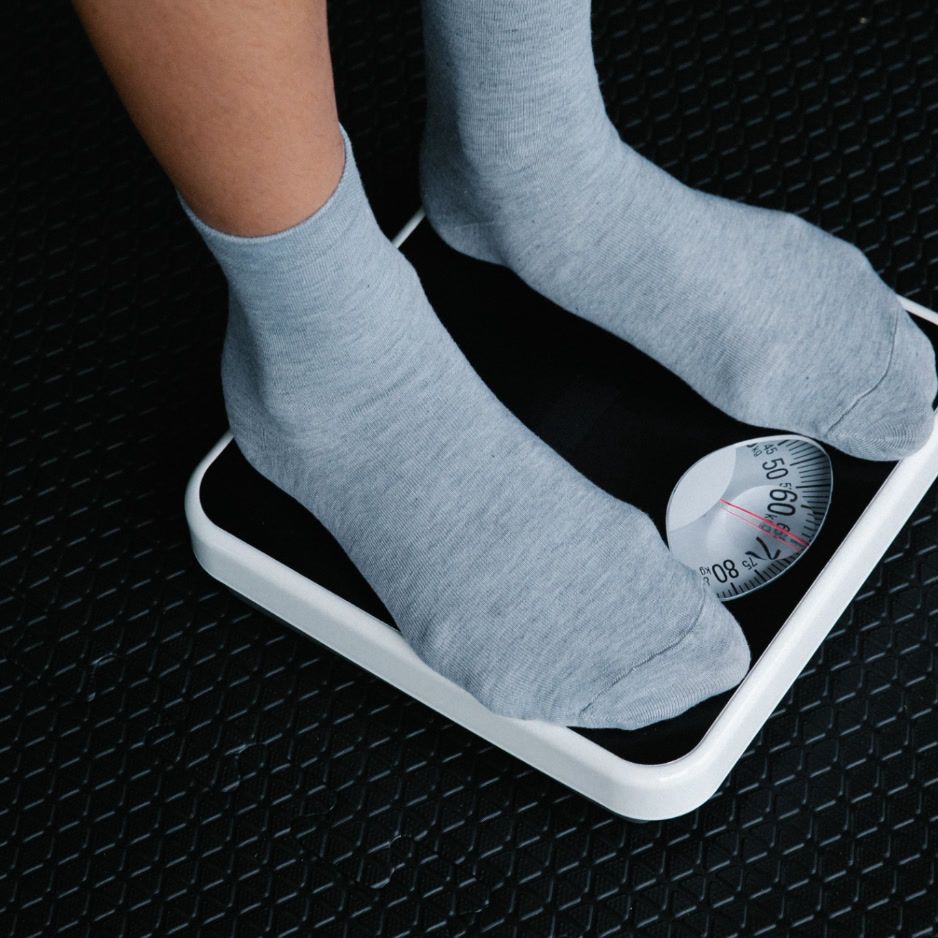The Ultimate Powerlifting Program Guide: Science-Based Templates for All Levels
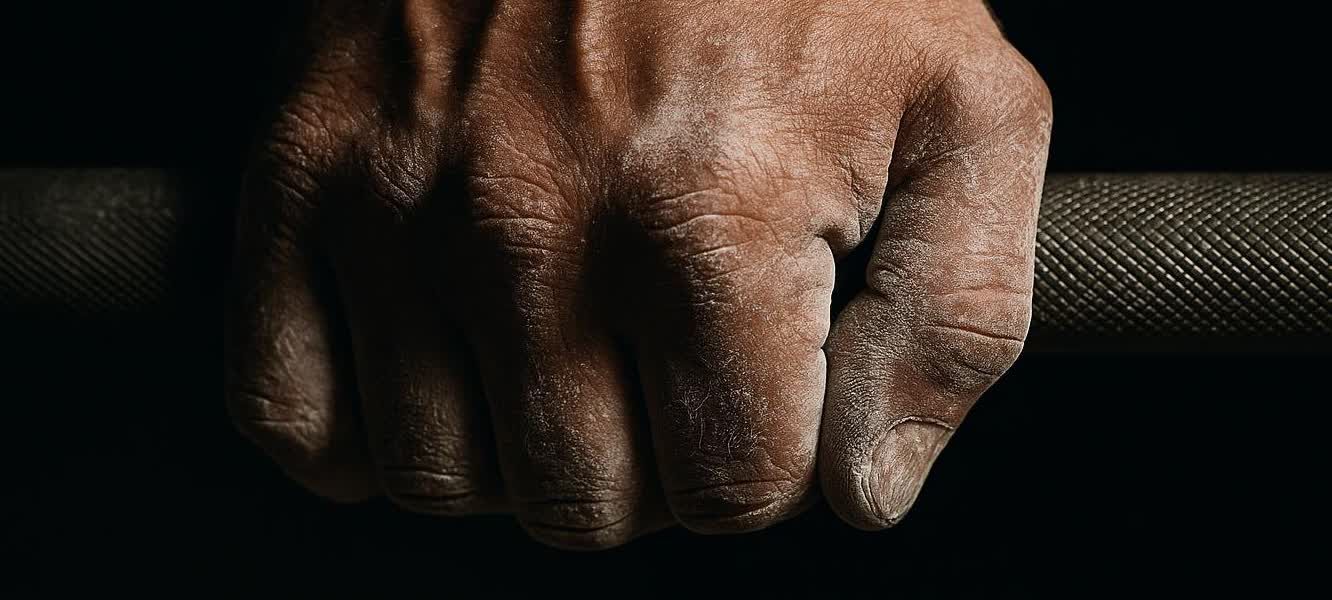
The Ultimate Powerlifting Program Guide: 3 Science-Based Templates for Every Level
Ready to add plates to the bar—and keep them there? Whether you’re learning how to squat without wobbling, squeezing workouts between meetings, or peaking for a meet, the right powerlifting program is your roadmap to bigger numbers. This guide walks you through exactly how to build (or download) a science-backed plan that fits your life.
Table of Contents
- Why Follow a Structured Powerlifting Program?
- Program Design 101: The Building Blocks
- Choose Your Track
- How to Calculate Your Training Weights
- Tracking Body Composition Changes with DEXA Scans
- Frequently Asked Questions
Why Follow a Structured Powerlifting Program?
A well-designed program removes guesswork, manages fatigue, and steadily increases volume and intensity so you can add weight safely—and quickly. A 2019 meta-analysis by Grgic et al. in Frontiers in Physiology found that periodized training produced significantly larger one-rep-max (1RM) improvements than non-periodized approaches.
Program Design 101: The Building Blocks
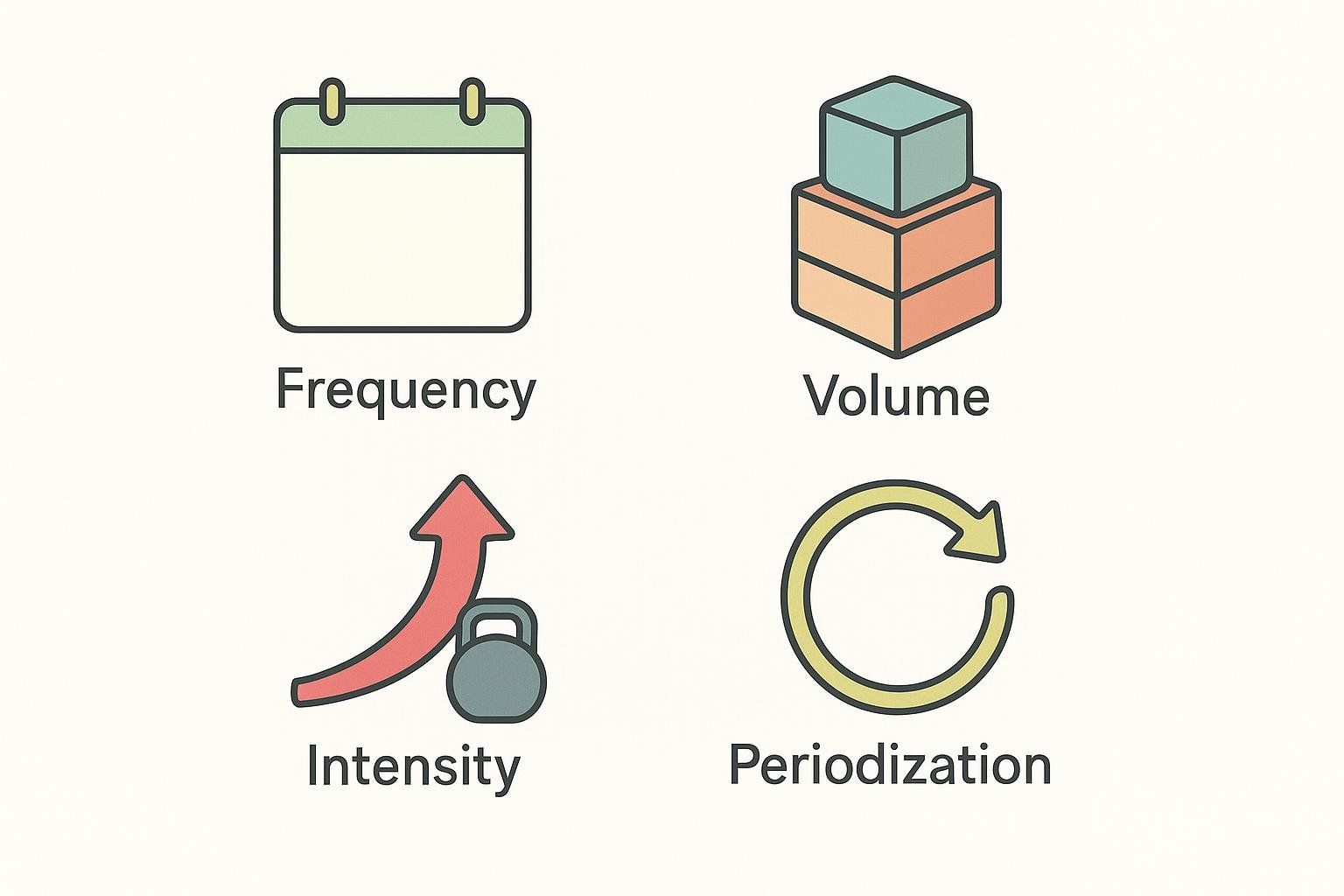
| Variable | What It Means | Typical Range |
|---|---|---|
| Frequency | How often you train each lift | 2–4× per week |
| Volume | Total hard sets (or tonnage) | 10–20 sets per lift, weekly |
| Intensity | % of 1RM or RPE | 60–92 % 1RM / RPE 6–9 |
| Periodization | Planned change in volume & intensity | Linear, undulating, or block |
Need a refresher? Check out our deep dive on Periodization Training.
Choose Your Track
Below are three plug-and-play templates. Copy the tables into your own spreadsheet or training app and start lifting today.
Quick-Start Cheatsheet
| Track | Who It’s For | Weekly Sessions | Progression Style | Goal |
|---|---|---|---|---|
| Beginner | < 1 year lifting | 3 | Linear | Build technique & confidence |
| Intermediate | 1–3 years or 315/225/405 lb Squat/Bench/Deadlift | 3 | DUP + RPE | Break plateaus |
| Advanced | Meet-prepping, 5+ yrs | 4 | Block | Hit PRs on platform |
12-Week Beginner Linear Progression (3 Days/Week)
Overview: Load increases follow the percentage tables below—roughly a 2 % bump each week. Aim to keep work sets around RPE 8 or lower. If a scheduled percentage pushes a set above RPE 8, hold last week’s weight or reduce by 2–3 % and re-attempt the increase the following week. No grinding to failure required.
Weekly Training Schedule
| Day | Main Lifts | Accessory Work (Sets × Reps) |
|---|---|---|
| Monday | Squat 3×5, Bench 3×5 | Barbell Row 3×8, Plank 3×60 s |
| Wednesday | Deadlift 1×5, Overhead Press 3×5 | Pull-Ups 3×AMRAP, Hip Thrust 3×8 |
| Friday | Squat 3×5, Bench 3×5 | Face-Pull 3×12, Farmer Carry 3×40 yd |
Accessory volume stays consistent—two movements per day keeps sessions beginner-friendly.
Weeks 1–6 Percentages
| Week | Squat | Bench | Deadlift |
|---|---|---|---|
| 1 | 65 % | 65 % | 70 % |
| 2 | 67 % | 67 % | 72 % |
| 3 | 69 % | 69 % | 74 % |
| 4 | 71 % | 71 % | 76 % |
| 5 | 73 % | 73 % | 78 % |
| 6 | 75 % | 75 % | 80 % |
Weeks 7–12 Percentages
| Week | Squat | Bench | Deadlift |
|---|---|---|---|
| 7 | 77 % | 77 % | 82 % |
| 8 | 79 % | 79 % | 84 % |
| 9 | 81 % | 81 % | 86 % |
| 10 | 83 % | 83 % | 88 % |
| 11 | 85–88 % (3×3) | 85–88 % (3×3) | 90 % (1×3) |
| 12 | 60–65 % (Deload) | 60–65 % (Deload) | 60–65 % (Deload) |
10-Week Intermediate RPE Routine (3 Days/Week)
Daily undulating periodization (DUP) plus RPE autoregulation keeps progress steady without marathon sessions.
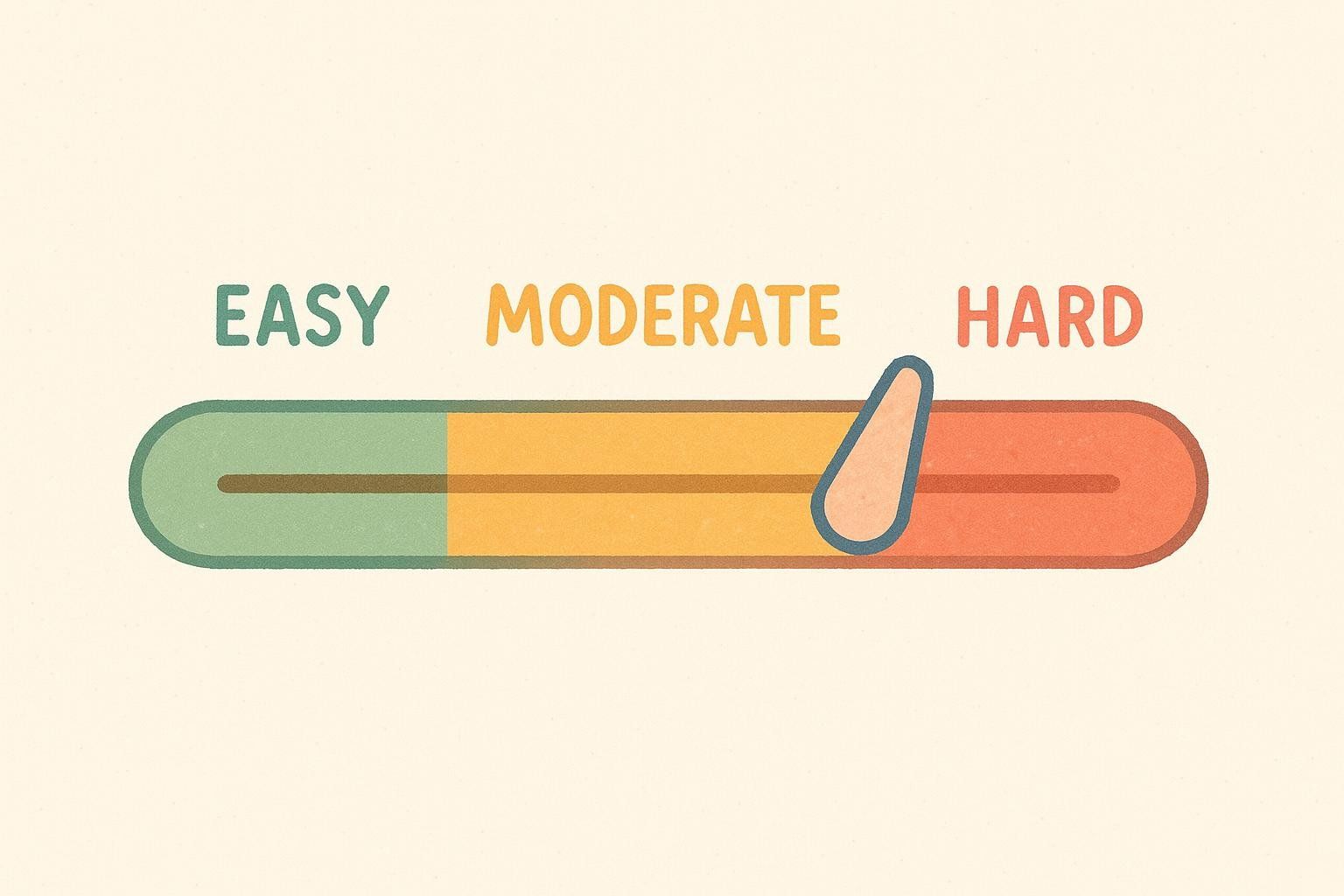
Base Weekly Template
| Day | Focus | Main Lift | Top-Set Target | Back-off Work | Accessories |
|---|---|---|---|---|---|
| Mon | Volume | Squat | 1×6 @ RPE 7 | 3×6 @ ~90 % of top-set weight | Lunges 3×8, Plank 3×60 s |
| Wed | Power | Bench | 1×3 @ RPE 6 | 5×3 @ ~90 % of top-set weight | Dips 3×8, Face-Pull 3×12 |
| Fri | Heavy | Deadlift | 1×4 @ RPE 8 | 2×4 @ ~90 % of top-set weight | Ham Curl 3×10, Pallof 3×12 |
Week-by-Week Roadmap
| Week | Mon: Squat | Wed: Bench | Fri: Deadlift | Notes |
|---|---|---|---|---|
| 1 | 6 @ 7 | 3 @ 6 | 4 @ 8 | Baseline |
| 2 | 6 @ 7.5 | 3 @ 6.5 | 4 @ 8 | +1 rep on all back-offs |
| 3 | 6 @ 8 | 3 @ 7 | 4 @ 8.5 | Heavy-day load +2 % |
| 4 | 5 @ 7 | 4 @ 6 | 3 @ 8 | Change rep targets |
| 5 | 5 @ 7.5 | 4 @ 6.5 | 3 @ 8.5 | Heavy-day load +2 % |
| 6 | 5 @ 8 | 4 @ 7 | 3 @ 9 | Back-offs −1 rep |
| 7 | 4 @ 7 | 2 @ 6 | 2 @ 8 | Begin taper—drop accessories if fatigued |
| 8 | 3 @ 6 | 1 @ 6 | 2×2 @ 60–65 % | Low-volume taper |
| 9 | — | — | — | Recovery & opener practice |
| 10 | Singles up to RPE 9 | Singles up to RPE 9 | Singles up to RPE 9 | Mock meet |
How to Use:
- Match the top-set RPE to the Roadmap each week.
- Apply the “Notes” tweak in addition to the RPE load adjustment.
- Back-off sets stay at ~90 % of that day’s top-set weight unless specified otherwise.
- Reactive fatigue rule: If any top set overshoots the target by >0.5 RPE, in the next week cut one back-off set from that lift and remove one accessory exercise for that session.
16-Week Advanced Competition Peak (4 Days/Week)
Classic block periodization with built-in recovery so seasoned lifters hit their biggest numbers on meet day.
Phase Overview
- Accumulation (Weeks 1–6): 65–75 %, RPE 6–7
- Intensification (Weeks 7–11): 75–85 %, RPE 7–8
- Transmutation (Weeks 12–14): 85–90 %, RPE 8–9
- Peaking & Taper (Weeks 15–16): 92–97 % singles then taper to 60–65 %
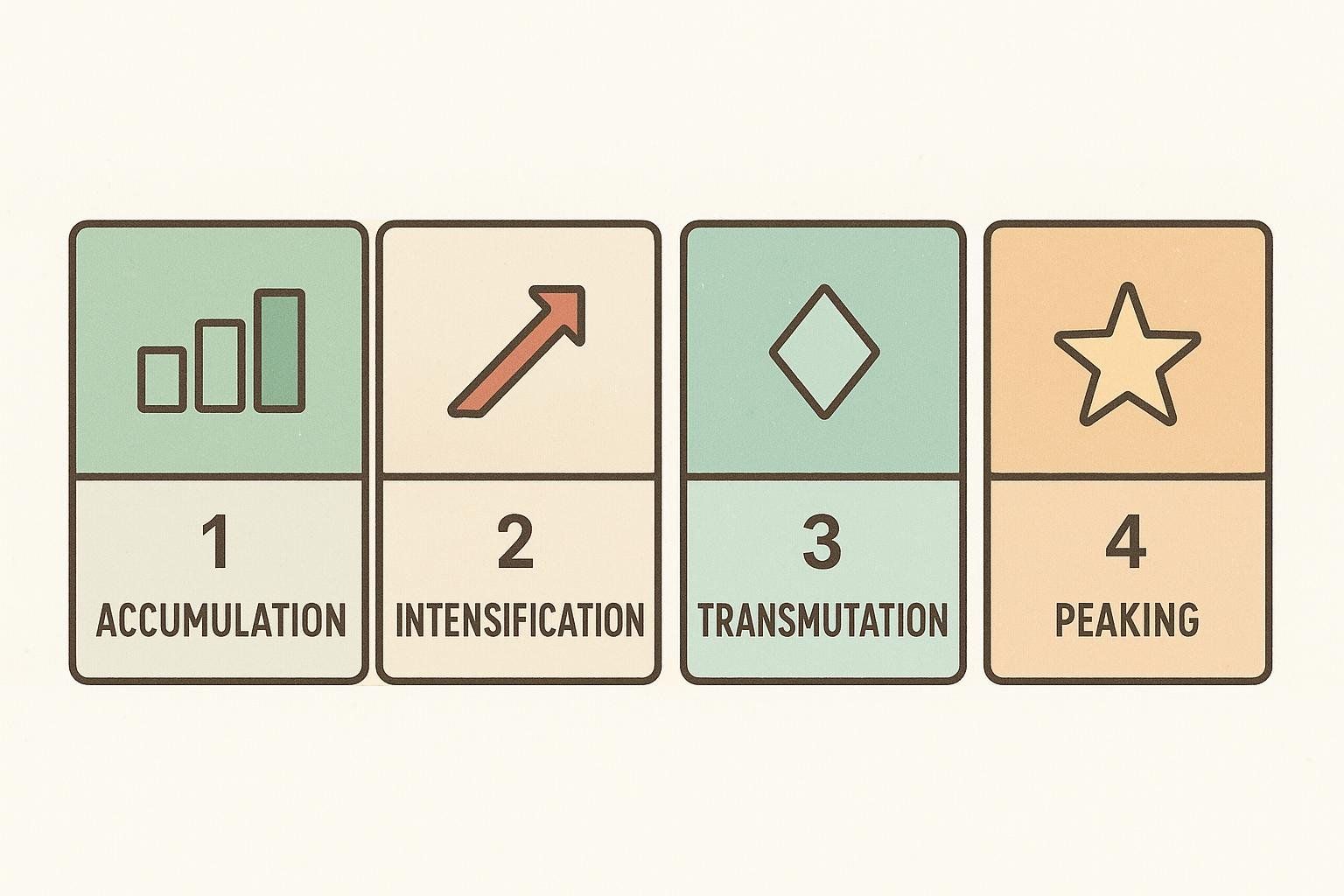
Sample Week 1 – Accumulation
| Day | Lift | Sets × Reps | % 1RM |
|---|---|---|---|
| Mon | Squat | 5×5 | 70 % |
| Tue | Bench | 6×4 | 68 % |
| Thu | Deadlift | 4×4 | 70 % |
| Sat | Comp Bench + Squat Variant (e.g., Paused Squat) | 5×3 | 75 % of each lift’s 1RM |
Progression: Add ≈2 % weekly while reps stay constant. If a session exceeds RPE 7, hold that load for one week before continuing upward.
Sample Week 7 – Intensification
| Day | Lift | Sets × Reps | % 1RM |
|---|---|---|---|
| Mon | Squat | 5×4 | 78 % |
| Tue | Bench | 5×3 | 76 % |
| Thu | Deadlift | 4×3 | 78 % |
| Sat | Comp Bench + Squat Variant | 4×3 | 80 % of each lift’s 1RM |
Progression: Add 2 % weekly and drop one rep every other week until ~85 % by Week 11.
Sample Week 12 – Transmutation
| Day | Lift | Sets × Reps | % 1RM |
|---|---|---|---|
| Mon | Squat | 4×3 | 86 % |
| Tue | Bench | 4×2 | 84 % |
| Thu | Deadlift | 3×3 | 86 % |
| Sat | Comp Bench + Squat Variant | 3×2 | 88 % of each lift’s 1RM |
Progression: Add ≈2 % weekly while keeping RPE ≤ 9. Cut accessory volume by ~30 %.
Sample Week 15 – Peaking & Taper
| Day | Lift | Work Sets | % 1RM |
|---|---|---|---|
| Mon | Squat | 3×1 | 92 % |
| Tue | Bench | 3×1 | 92 % |
| Thu | Deadlift | 2×1 | 94 % |
| Sat | Squat & Bench (Opener Practice) | 3×1 each | 60–65 % |
Week 16: perform openers (~90 %) early, then rest until meet day.
How to Calculate Your Training Weights

- Find your 1RM—test or estimate with the Epley formula.
- Apply the percentage tables above.
- Fine-tune with RPE: If a set feels off, adjust by ≈2–3 %. A 2018 review by Helms et al. in Sports Medicine supports RPE-based autoregulation for strength athletes.
Tracking Body Composition Changes with DEXA Scans
A BodySpec DEXA scan provides lab-grade insight that bathroom scales miss:
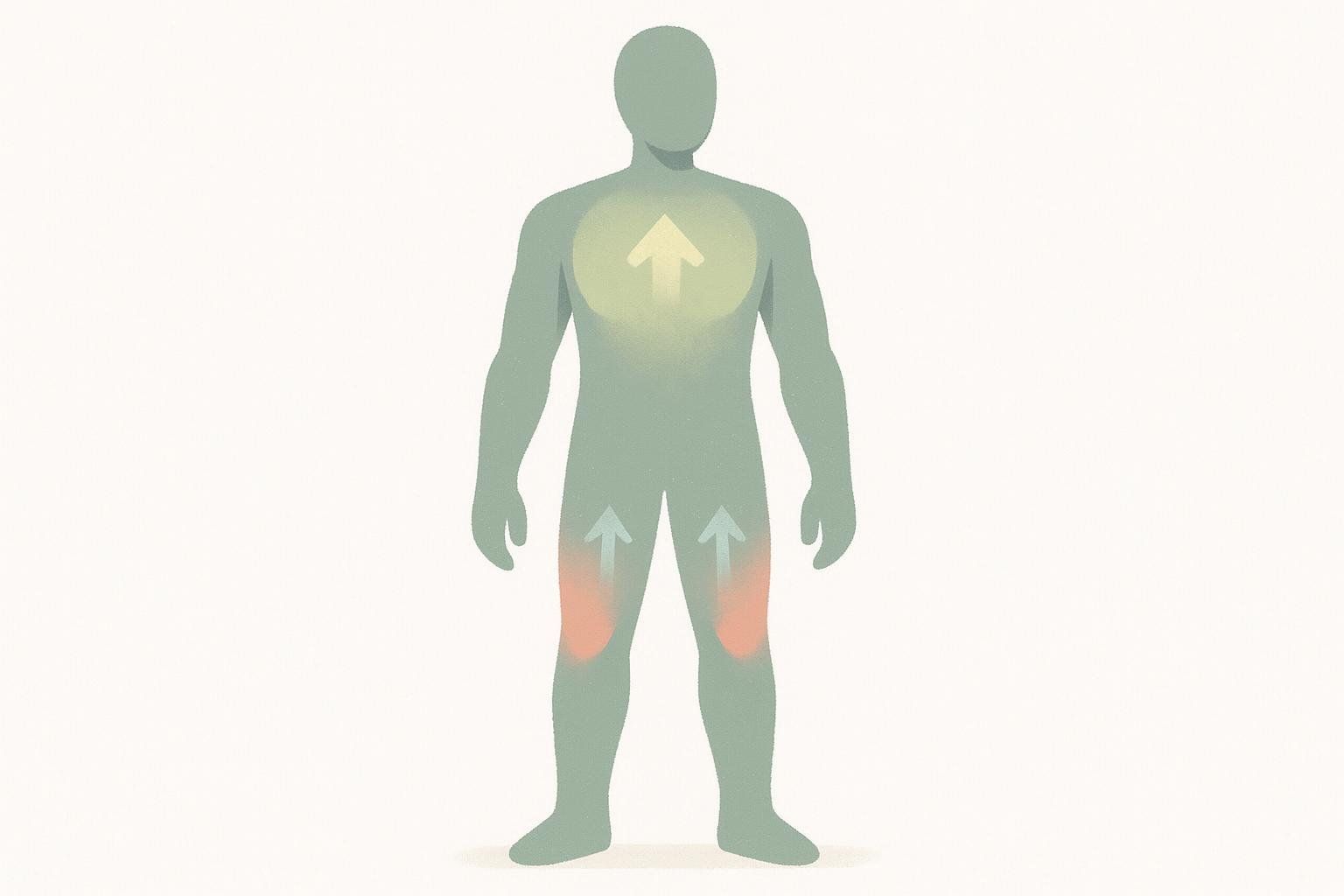
- Lean-mass gains in each limb and the trunk
- Visceral-fat shifts—key for cardiometabolic health
- Bone-density trends essential for heavy lifters
Learn more in What’s the Real Cost of a DEXA Scan?.
Frequently Asked Questions
How long should a beginner powerlifting program last?
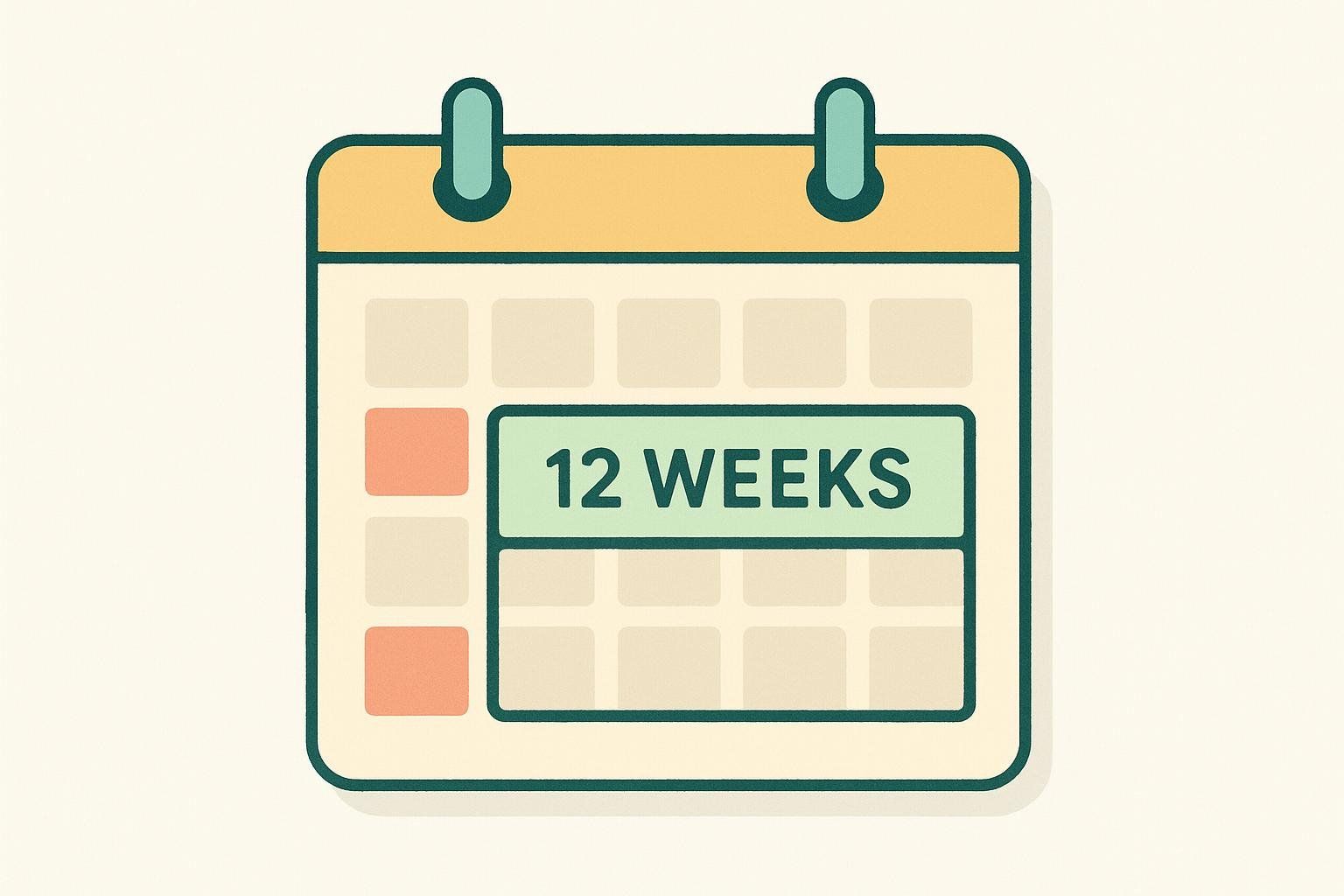
About 12 weeks before you need to tweak volume or intensity.
Can I run the beginner program at home?
Yes—barbell, rack, bench, and plates are all you need.
How many accessories do I really need?
Two or three movements that target your weak links are plenty.
Should I train to failure?
Finish most working sets around RPE 8–9 (1–2 reps in reserve). Reserve true failure (RPE 10) for the occasional mock meet or planned max attempt.
Book your DEXA scan now and turn snapshot data into stronger lifts.

